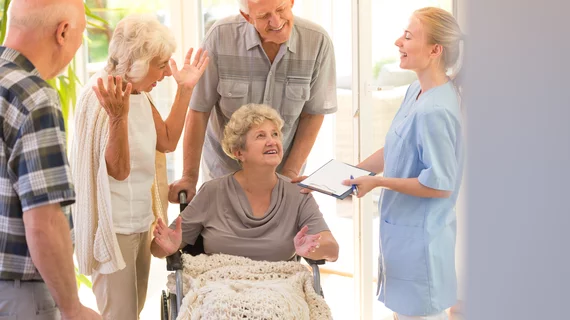Implementing a same-day PCI discharge pathway boils down to correct patient selection
With advances and increased experience in percutaneous coronary intervention (PCI), same-day discharge (SDD) has become increasingly commonplace. However, the Society for Cardiovascular Angiography and Interventions (SCAI) said patient selection is crucial to success.
SDD can provide many benefits to patients and health systems and has become the predominant model of care following an elective PCI, SCAI detailed in its February "Quality Improvement Tips of the Month." An outline for keeping these procedures safe is explained by authors Maximillian Bourdillon, MD; Konstantinos Charitakis, MD, FSCAI; and Konstantinos Dean Boudoulas, MD, FSCAI.
They said the advantages of SDD include improved patient satisfaction when compared to routine overnight monitoring and reduced nosocomial infections and hospital-associated adverse events, such as falls. There is also an associated cost benefit to the health system with improved bed capacity and hospital throughput. There also would be an estimated savings of $200-$500 million if half of U.S. patients undergoing elective PCI used SDD. They pointed out that rates of SDD are rising, and there has not been any associated increase in adverse outcomes.
Selecting the right PCI patients for same day discharge
These are the key points when considering which patients are ideal for SDD:
- Any nonurgent, outpatient PCI can be considered for SDD. Patients presenting with acute coronary syndrome need closer monitoring, but staged procedures at the end of a hospitalization to completed revascularization of a nonculprit lesion might also be considered, the authors explained. It really boils down to the complexity of the intervention, they said.
- Patients should have adequate home caregiver support to stay with the patient overnight following discharge, help with activities of daily living, and aid with access to emergency services, if needed.
- Patients are identified by the operator pre-procedure, based on procedural and anatomic considerations and the patient’s choice to proceed with SDD.
- After PCI, reassessment of the patient should be performed to ensure they still qualify for SDD. This includes successful PCI without complications, routine post-procedure vascular access site monitoring, patients’ clinical status, and evaluation for evidence of stroke or changes in mental status, bleeding, allergic reactions, angina, heart failure, ECG changes, arrhythmia, or exacerbation of chronic medical conditions.
- Pre-procedure and post-procedure checklists are highlighted in the 2021 American College of cardiology (ACC) Expert Consensus Decision Pathway to identify patient suitability for SDD pre-procedure, post-PCI, and pre-discharge.

